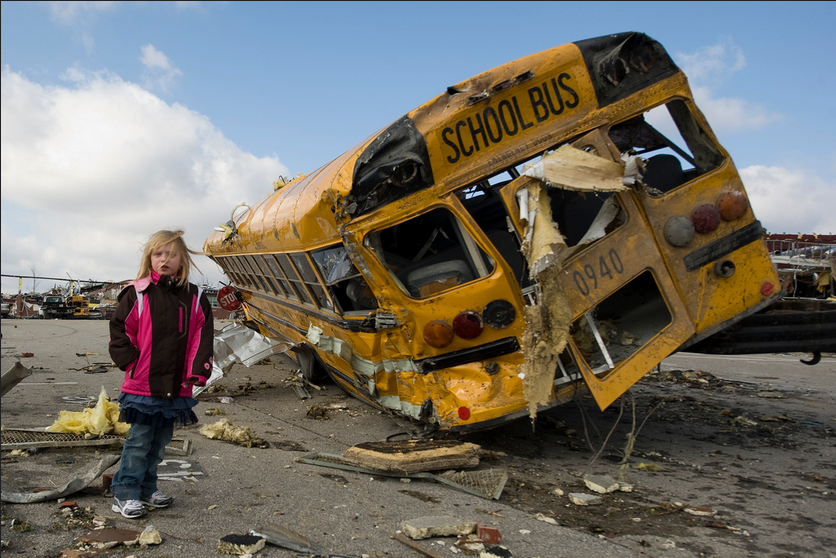When reading through the outline below, take note of any tips that go against what you have previously learned. For example, growing up we were always told to stand in a doorway for safety during an earthquake. And talking to some of our survivalist friends today, we were not alone in that learned behavior. But it turns out, that is n0t a safe place to be and should be avoided entirely. Read below for more tips:
During an Earthquake
Drop, cover and Hold On. Minimize your movements to a few steps to a nearby safe place and if you are indoors, stay there until the shaking has stopped and you are sure exiting is safe.
If Indoors
- DROP to your hands and knees.
COVER your head and neck with your arms. This position protects you from falling and provides some protection for vital organs. Because moving can put you in danger from the debris in your path, only move if you need to get away from the danger of falling objects. If you can move safely, crawl for additional cover under a sturdy desk or table. If there is low furniture, or an interior wall or corner nearby and the path is clear, these may also provide some additional cover. Stay away from glass, windows, outside doors and walls, and anything that could fall, such as lighting fixtures or furniture.
HOLD ON to any sturdy shelter until the shaking stops. - Stay away from glass, windows, outside doors and walls, and anything that could fall, such as lighting fixtures or furniture.
- If you are in bed: STAY there and COVER your head and neck with a pillow. At night, hazards and debris are difficult to see and avoid; attempts to move in the dark result in more injuries than remaining in bed.
- DO NOT get in a doorway as this does not provide protection from falling or flying objects and you likely will not be able to remain standing.
- Stay inside until the shaking stops and it is safe to go outside. Do not exit a building during the shaking. Research has shown that most injuries occur when people inside buildings attempt to move to a different location inside the building or try to leave.
- DO NOT use the elevators.
- Be aware that the electricity may go out or the sprinkler systems or fire alarms may turn on.
If Outdoors
- If you can, move away from buildings, streetlights, and utility wires.
- Once in the open, Drop, Cover, and Hold On. STAY THERE until the shaking stops. This might not be possible in a city, so you may need to duck inside a building to avoid falling debris.
If in a Moving Vehicle
- Stop as quickly as safety permits and stay in the vehicle. Avoid stopping near or under buildings, trees, overpasses, and utility wires.
- Proceed cautiously once the earthquake has stopped. Avoid roads, bridges, or ramps that might have been damaged by the earthquake.
For more information on earthquakes, how to prepare, what you should have on hand, and a complete list of what to do before an earthquake hits, please visit Ready.Gov.
It's very helpful that they broke down the list based on your environment. Apply this information to your communication plan and make sure you and your family are prepared for each scenario. This will reduce feelings of panic and anxiety during an earthquake because you and your family will have a point of focus: Your plan!
Do You Have an Earthquake Plan?
Are you proud of the steps you've taken to prepare yourself for a disaster? Do you feel you have the skills necessary to survive in the event of an earthquake? If so, we'd love to hear about it. Share with us and let's compare notes!
